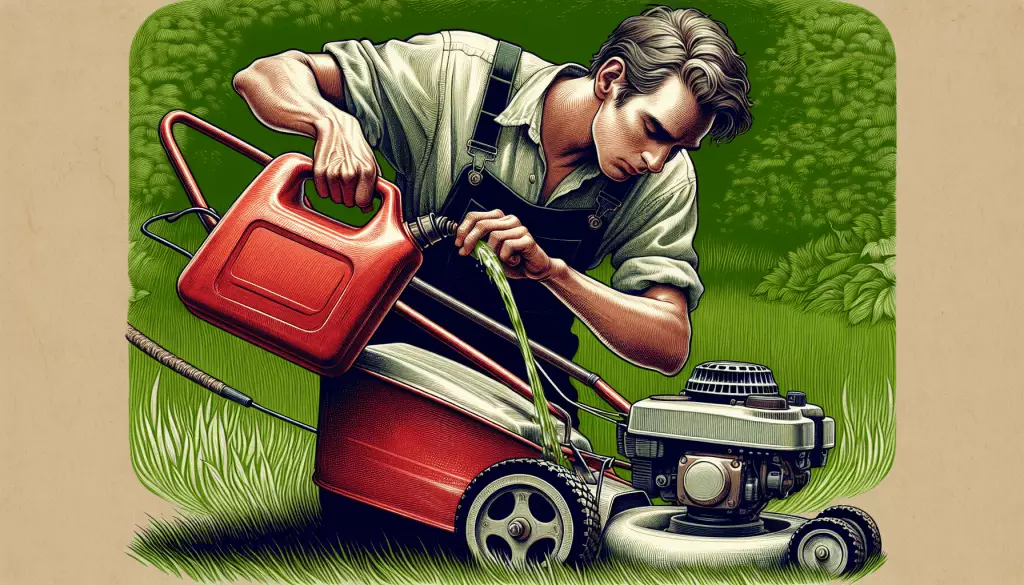How to Start a Lawn Mower – Everything You Need to Know
If you’re unsure how to start a petrol lawn mower, you’re in the right place. This guide covers each essential step, from reading the manual to troubleshooting issues. Follow these simple instructions to get your mower started effortlessly.
Key Takeaways
- Read the user manual to understand the specific fuel and oil requirements for your lawn mower.
- Check the fuel tank for fresh petrol and ensure it’s free of debris to avoid starting issues.
- Perform regular maintenance, like inspecting the oil level and spark plug, to ensure your mower starts smoothly.
Read the User Manual
Start with the user manual before tackling the mechanics of your lawn mower. It might seem tedious, but it’s crucial. The manual is a wealth of specific information that assists you in avoiding common mishaps such as the utilisation of incorrect fuel or oil for your particular petrol lawn mower model. Trust us, a few minutes spent reading can save you hours of frustration.
The user manual also outlines the necessary petrol and engine oil requirements. Using the correct type of fuel and oil is essential for the mower to start and run smoothly. So, take a moment to familiarise yourself with your machine’s needs. Your garden (and your sanity) will thank you.
Check the Fuel Tank

With a decent understanding of your mower’s specifics, you can now proceed to inspect the fuel tank. A low or empty fuel tank can be a major roadblock. Ensure your petrol lawnmower has the correct type of petrol, typically Euro-unleaded gasoline for four-stroke engines.
Stale fuel often serves as an unnoticed offender in an oil tank. If petrol has been sitting in the tank for several months, it degrades and becomes less effective. This can lead to starting issues. Always replace old fuel with fresh fuel to keep your engine in top shape, and consider using new fuel for optimal performance.
Remember, the fuel tank isn’t just about petrol. Check for any debris or blockages in the fuel line and carburettor. A clean tank is a happy tank. With fresh fuel, your petrol mower will be ready to tackle the grass.
Inspect the Oil Level
Moving on to engine oil, which is quite literally the lifeblood of your mower. Here’s how to check the oil level:
- Place your mower on a level surface to get an accurate reading.
- Use the dipstick to check the oil level.
- Remove the dipstick, wipe it clean, reinsert it fully, and then take the reading.
The oil level should be between the ‘full’ and ‘add’ marks on the dipstick. If it’s low, add the correct amount of motor oil to reach the appropriate level. Avoid overfilling, as too much oil can harm the engine. A well-oiled machine is critical to a smooth start.
Prime the Engine

Once you’ve checked the oil, you can go ahead and prime the engine. Priming helps fill the carburettor with fuel, making it easier to start the engine. Most petrol lawnmowers have a priming button, usually red or black.
Press the gasoline button 3 to 5 times before starting the engine. This simple step ensures that your mower’s small engine has enough fuel to get going. Think of it as giving your mower a little nudge to wake up and get to work.
Set the Throttle Lever
Adjust the throttle lever before you pull the starter cord. The throttle lever controls the engine RPM, and positioning it correctly is crucial for a smooth start. Set it to a mid-high position, typically marked as ‘fast’ or ‘start’.
Setting the throttle too low can make starting difficult. A mid-high position helps maintain a steady RPM, ensuring your engine starts smoothly and efficiently. It’s a small adjustment, but it makes a big difference.
Check the Spark Plug
Having a clean and operational spark plug is a prerequisite for starting your mower. First, ensure the spark plug cap is firmly attached. Then, inspect the spark plug for dirt or wear. Carbon deposits can prevent proper ignition, so clean any debris you find.
If the spark plug is excessively worn or damaged, replace it to ensure efficient fuel combustion and smooth engine operation. Also, check that the spark plug isn’t wet, as this might indicate an engine flooding issue. A spark plug in good condition is a game-changer.
Pull the Starter Cord

Once everything is in place, you can proceed to pull the starter cord. Ensure your mower is on a level surface. Firmly grasp the starter cord and pull it away from the mower to ignite the engine. For newer models, you might have a start button instead.
After pulling the starter cord, guide it back gently to avoid damage. This simple act of care can extend the life of your pull cord and keep your mower in good working order. Now, you’re ready to start mowing!
Troubleshooting Common Issues
Despite thorough preparation, unexpected issues might surface. If your mower doesn’t start, it could be due to a flooded engine. Incorrectly tipping the mower can flood the air filter or exhaust with oil. To fix this, disconnect the spark plug and let the engine dry out for about 30 minutes.
If flooding persists, follow these steps:
- Remove the air filter and drain any excess fuel from the carburettor by turning the mower on its side and cranking the engine briefly.
- Replace the air filter if it’s overly saturated with fuel.
- Check the fuel line and tank for debris or blockages, as these can also cause flooding.
Other common issues include dirty spark plugs or an empty fuel tank. Ensure the spark plug is clean and firmly attached. If the engine still doesn’t start, you may need to adjust the carburettor. Most problems are easily fixed with a bit of troubleshooting.
Cold Weather Starting Tips

Initiating a petrol lawn mower during cold weather necessitates certain modifications. Using the correct motor oil is crucial. Opt for oils like 5W-30, which are designed for lower temperatures. Regular motor oil can struggle in the cold, making it harder to start the engine.
Adjust the choke to restrict air intake when starting in cold weather. This simple tweak can make a big difference in how easily your mower starts. With the right oil and choke settings, winter lawn care becomes a breeze.
Safety Precautions
Prioritise safety during lawn mowing! Here are some tips to keep in mind when using a petrol lawn mower:
- Clear all debris, such as sticks, stones, and garden toys, before starting the mower to prevent them from being flung by the blades.
- Always wear sturdy shoes and long trousers to protect against thrown objects.
- Avoid loose clothing or jewellery.
- Keep children and pets at a safe distance.
Operate the mower at a safe speed, and never pull it toward you; always push it away. Following these precautions will prevent accidents and ensure a smooth mowing experience.
Maintenance Tips for Easy Starts

Frequent maintenance plays a pivotal role in ensuring easy starts and peak performance. Change the air filter every season to improve fuel efficiency and prevent engine overheating. It should be part of a spring engine tune-up to ensure a clean engine.
To keep your quality mower in top shape, follow these maintenance tips:
- Check the oil level regularly to prevent damage and ensure optimal performance.
- Keep the mower cutting blade sharp. A blunt blade increases fuel consumption and can damage the engine.
- Regular maintenance keeps your mower ready for action.
Summary
Starting a petrol lawn mower doesn’t have to be a headache. By following these steps—reading the user manual, checking the fuel and oil levels, priming the engine, setting the throttle lever, and more—you’ll ensure smooth starts and a well-maintained mower.
Remember, regular maintenance and safety precautions are essential for optimal performance and longevity. Happy mowing!
Visit the Generator-Pro website for more information on How to Start a Lawn Mower – Everything You Need to Know






